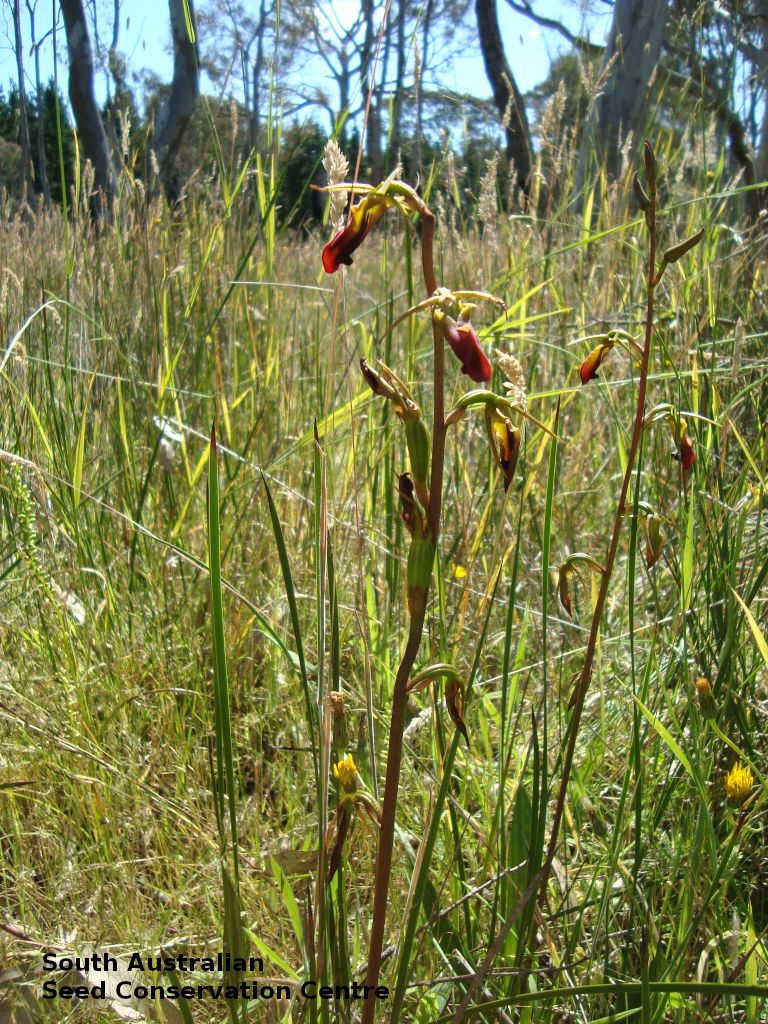





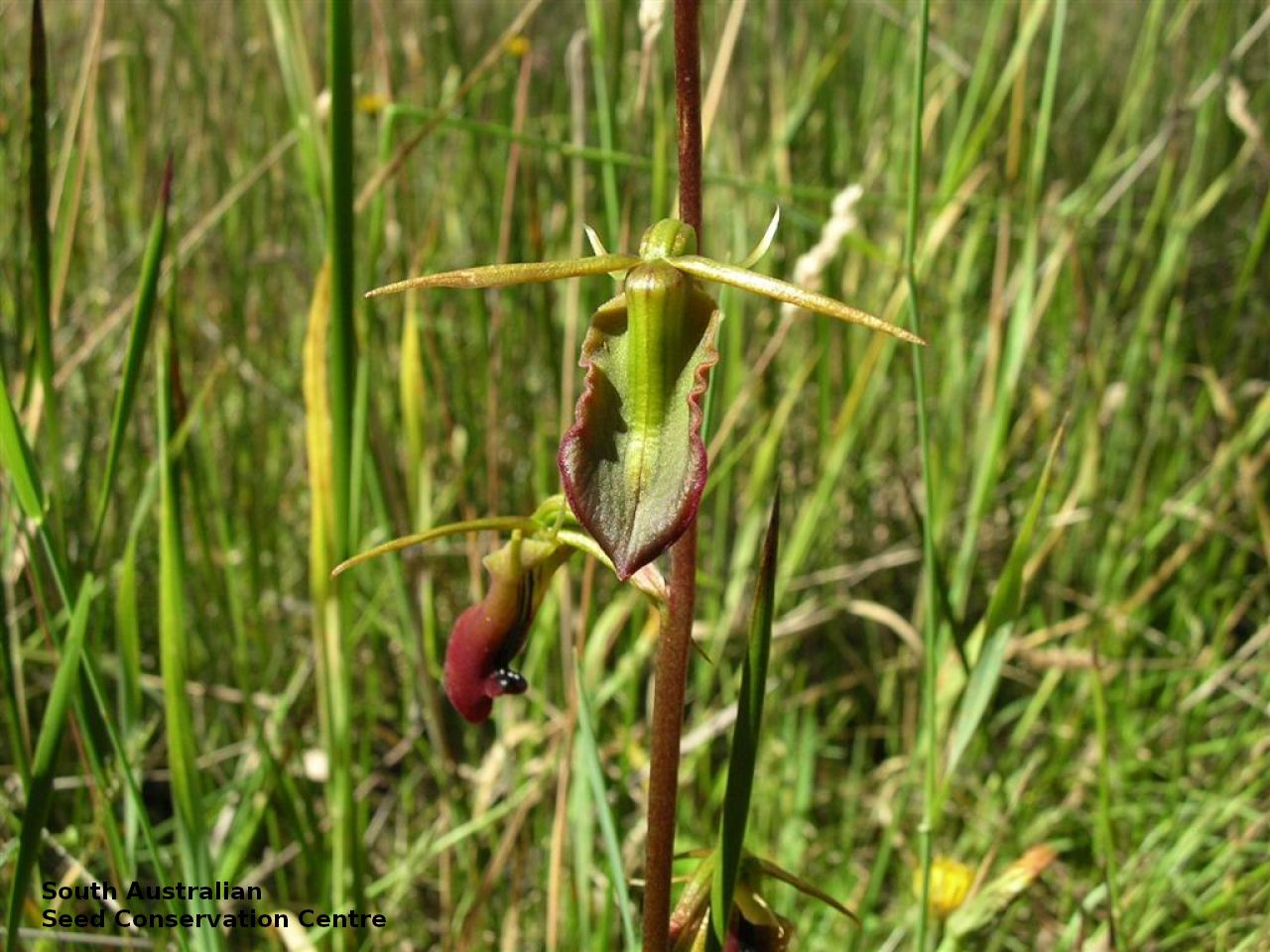


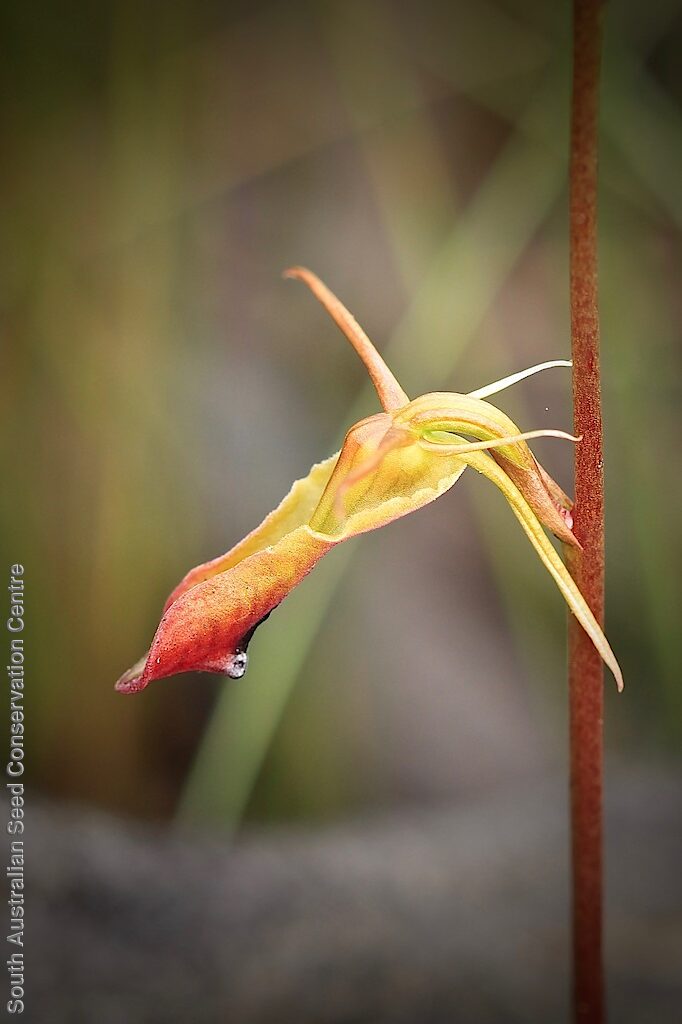


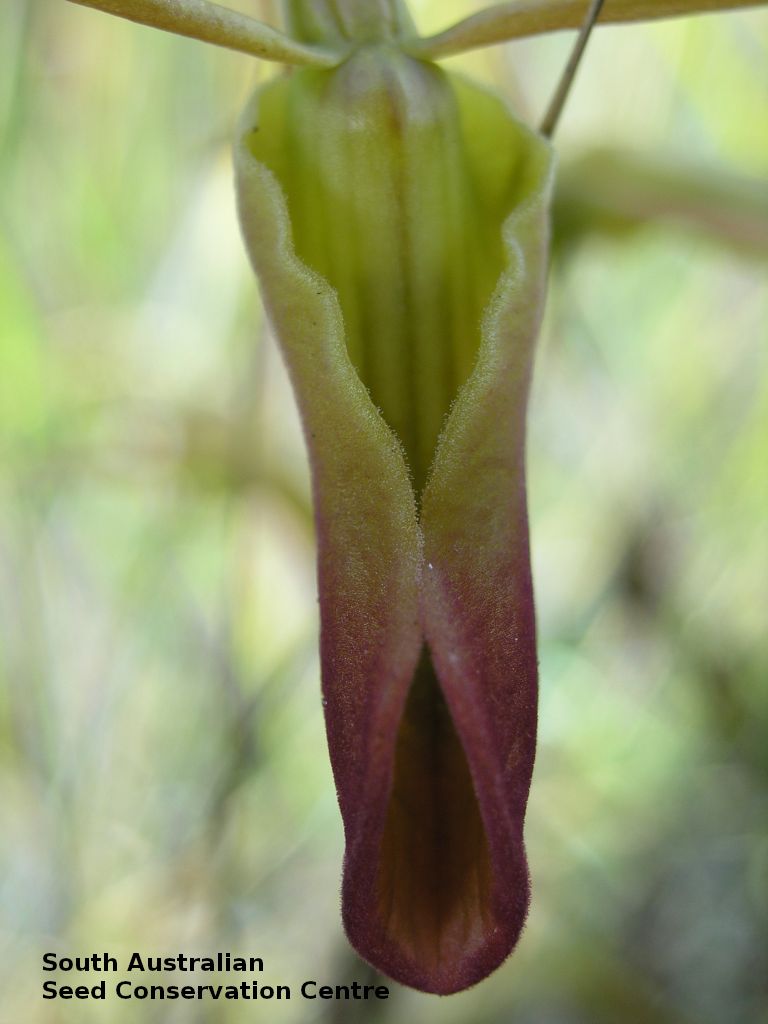
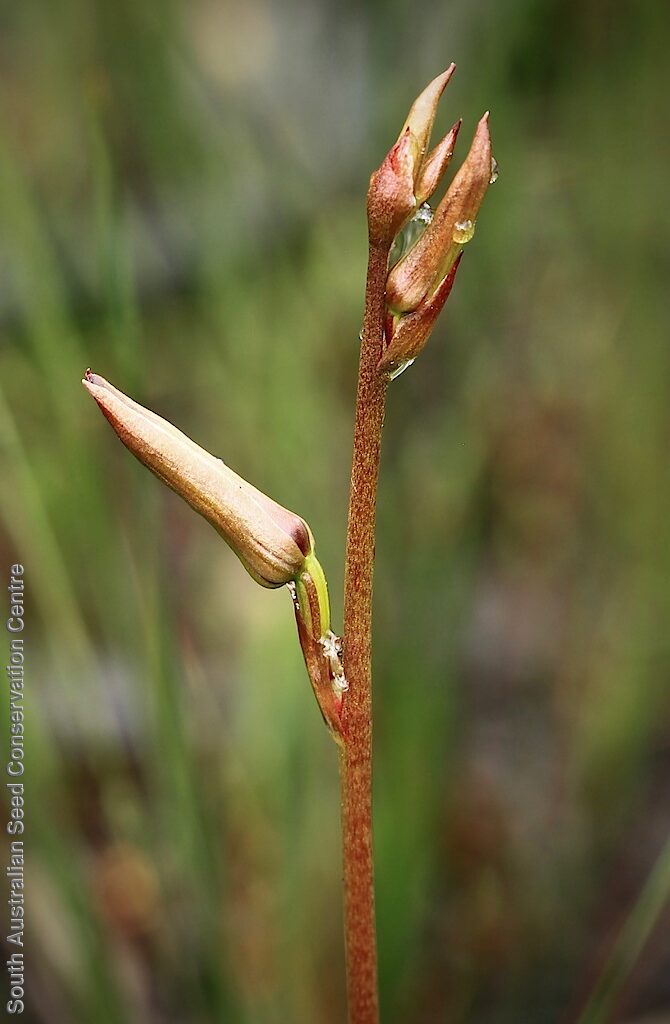


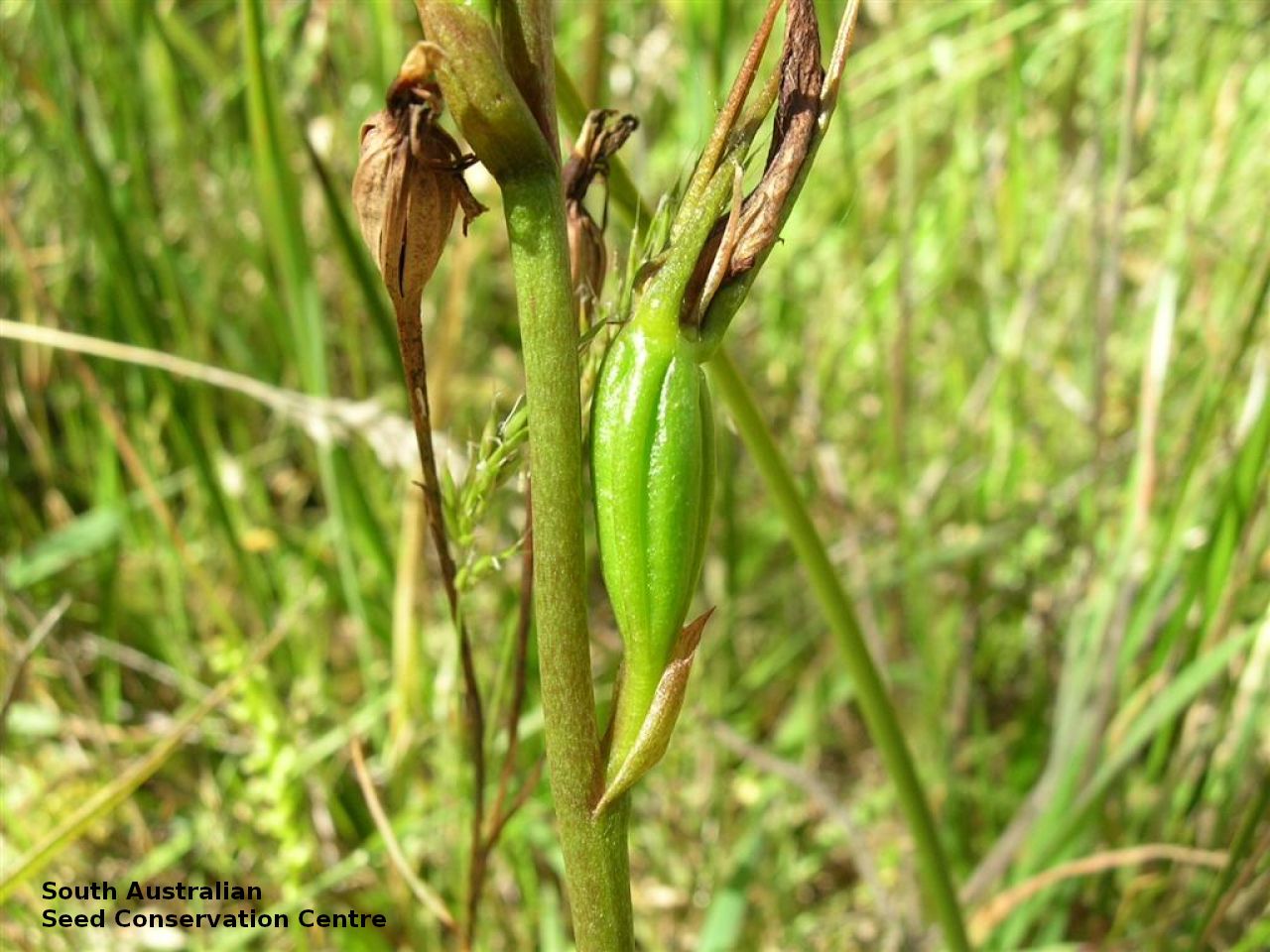

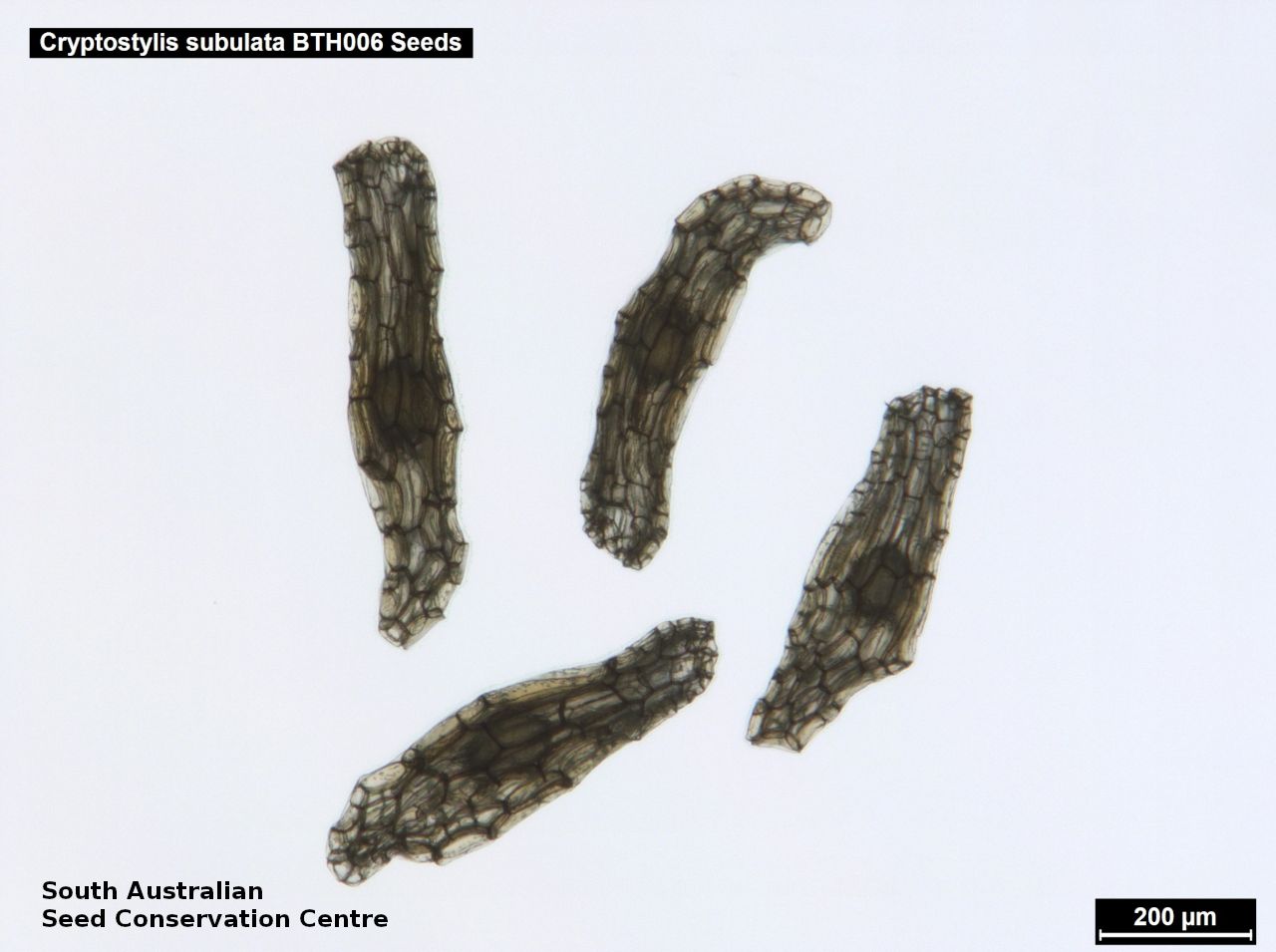

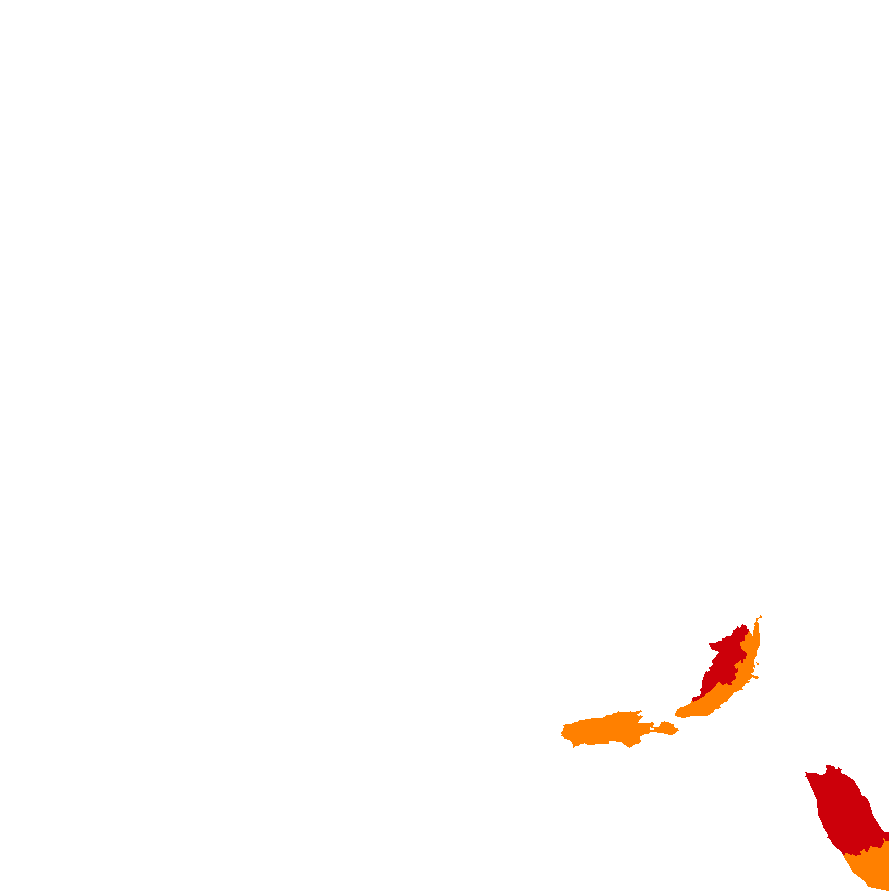
Botanical art
Prior names
Malaxia subulata
Malaxis subulata
Cryptostylis longifolia, nom.illeg.
Common names
Moose orchid
Large Tongue-orchid
Etymology
Cryptostylis from the Greek 'cryptos' meaning hidden and 'stylon' meaning column, style, referring to the recessed column. Subulata from the Latin 'subulata' meaning depressed, referring to the labellum being angled down toward its apex.
Distribution and status
Found on Kangaroo Island, southern Mount Lofty Ranges and the lower South-east in South Australia, growing in swamps, marshes, bog and along the edges of streams, often found in Leptospermum continentale shrublands and on sandy soils. Also found in Queensland, New South Wales, Victoria and Tasmania. Native. Rare in South Australia. Common in the other States.
Herbarium regions: Southern Lofty, Kangaroo Island, South Eastern
NRM regions: Adelaide and Mount Lofty Ranges, Kangaroo Island, South East
AVH map: SA distribution map (external link)
Plant description
Annual terrestrial orchid growing to 80 cm tall with up to 20 flowers. Erect leathery lanceolate leaves with both surfaces dark green to yellow green, to 35 cm long. Flowers have a large labellum to 30 mm long, ovate with recurved margins, grading from yellow to reddish at tip. Sepals are yellowish-green to 35 mm long. Flowering between November and April. Fruits are brown papery ellipsoid capsule. Seeds are very small brown ellipsoid seed with a long cylindrical translucent brown mesh-like covering.
Seed collection and propagation
Collect seeds between March and June. Collect plump capsules as they start to dry and turn brown. Pods will split and release the seeds quickly and will require monitoring. To increase the chances of collecting mature pods, it is recommended that a small breathable bag (ie. Organza bags) be used to enclose the developing capsules. Place the capsules in a container that will hold fine seeds and leave to dry for a few weeks or until the capsule split. Then carefully hold the capsule and tap it gently to release the seeds. Store the seeds with a desiccant such as dried silica beads or dry rice, in an air tight container in a cool and dry place, refrigerator or in liquid nitrogen. More research is needed in order to understand the requirements for seed germination in the genus Cryptostylis.
Fire response
Obligate re-spouter and re-seeder.
Longevity: ??? years
Time to flowering: ???? years
Recovery work
In 2020-2021 this species was assessed post-fire in 1 year old fire scars. A total of 1,775,000 seeds have been collected & banked for a population outside the 2020 fire scar. Further populations will be assessed and seeds collected on Kangaroo Island in 2021–2022. Germination screening testing the response to fire cues will be undertaken in 2021.This project was supported by the Wildlife & Habitat Bushfire Recovery program.
| Location | No. of seeds (weight grams) | Number of plants | Date collected | Collection number Collection location | Date stored | % Viability | Storage temperature |
|---|---|---|---|---|---|---|---|
| MSB | 100,000 (0.1536 g) | 30 | 6-Mar-2007 | DJD744 South Eastern | |||
| BGA | 80,000 (0.028 g) | 4 | 1-Feb-2015 | OVE3939 Kangaroo Island | 1-Nov-2016 | 85% | -80°C |
| BGA | 60,000 (0.021 g) | 15 | 26-Mar-2014 | BTH6 South Eastern | 1-Nov-2016 | 45% | -80°C |
| BGA | 110,000 (0.039 g) | 6 | 30-Mar-2015 | OVE3203 Kangaroo Island | 1-Nov-2016 | 55% | -80°C |
| BGA | 1,775,000 (0.625 g) | 30+ | 4-Mar-2021 | DJD4016 Southern Lofty | 28-Jun-2021 | N/C | -18°C, -80°C |
| BGA | 1,955,114 (0.688 g) | 10+ | 28-Feb-2022 | DJD4106 Kangaroo Island | 10-Aug-2022 | N/C | -18°C, -80°C |
| BGA | 593,182 (0.209 g) | 10+ | 3-Mar-2022 | DJD4117 Kangaroo Island | 10-Aug-2022 | N/C | -18°C, -80°C |
| BGA | 37,200 (0.013 g) | 1 | 19-Nov-2021 | Kangaroo Island Kangaroo Island | 21-Jun-2023 | N/C | -18°C |
Number of plants: This is the number of plants from which the seeds were collected.
Collection location: The Herbarium of South Australia's region name.
% Viability: Percentage of filled healthy seeds determined by a cut test or x-ray.